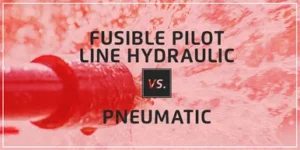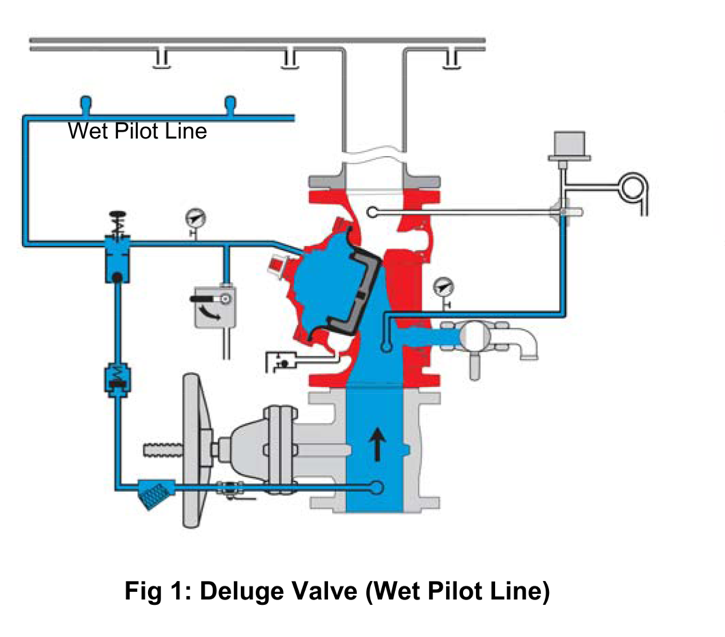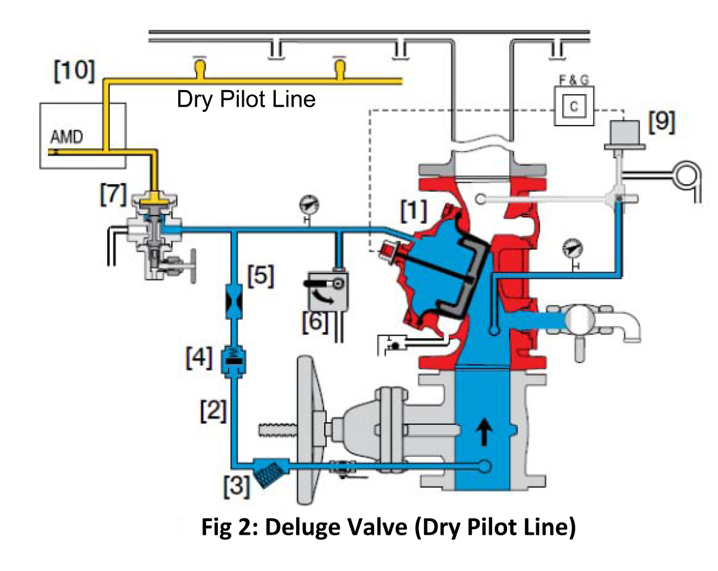Deluge Valve Leakage: UL-260 vs. ANSI/FCI 70-2
From an engineering point of view, almost all valves leak…
Did You Update BERMAD Connect Already? Check It Out
Update BERMAD Connect Today! Check It Out
BERMAD > Knowledge Center > Blog > Deluge Valves: Hydraulic vs. Pneumatic Fusible Pilot Lines
One of the many choices to be made in designing an industrial fire protection system is to determine the deluge valves operation philosophy in the event of a fire – manually or automatically. The next designing step for an automatic operation is how the pilot sprinklers with fusible plugs will be activated, pneumatically or hydraulically. The advantage of an automatic operation is that it takes place immediately in response to triggering conditions such as heat or flame, without need for human interference or decision making. This enables fast system response even in remote or unmanned locations.
In an automatically controlled fire protection system, fusible plugs are typically used as detection devices. These are devices installed as closed sprinklers on the pilot line, that melt or break when temperatures reach 60˚C or more. When broken, they activate/open the sprinklers which in result release the pilot line pressure.

There are two main types of pilot line: hydraulic and pneumatic. Hydraulic and pneumatic systems utilize identical sprinklers and piping. The difference is in the media. A hydraulic system uses water, while a pneumatic system is filled with air, or sometimes nitrogen gas.
Deluge valves are always connected to water piping. Early Automatic deluge systems included a hydraulic (wet) pilot line. However, piping that is always full of water can develop issues such as leaks and corrosion. Therefore, for certain applications a pneumatic (dry) pilot line is sometimes preferable. Modern fire protection systems may use either type of pilot line. Let’s examine the pros and cons of hydraulic vs. pneumatic pilot lines.
Download the FP400Y Torrent Deluge Valves Brochure Now!
Because a hydraulic pilot line utilizes the same media source as the deluge valve, the same pipe can be used, and there’s no need for additional equipment to fill the line. A wet pilot line can also share the same filter screen as the deluge valve uses. This makes for convenient and cost-effective installation.
On the other hand, hydraulic pilot lines are subject to the following disadvantages:


Pneumatic (dry) pilot lines were developed in order to bypass the disadvantages of hydraulic (wet) lines. They offer a cleaner operation through the use of non-corrosive media. There is also no height limitation with a pneumatic valve line.
However, pneumatic lines have their disadvantages as well. Setting up a pneumatic system requires additional utilities. Air has to be pressurized by an air compressor system or use a plant instrument air utility that is regulated to low pressure and restricted flow via an air maintenance device. These factors add to the cost of the system.
In addition, due to the compression factor of the air, it can take a little longer for a pneumatic system to activate the deluge valve. It must be designed properly to achieve quick response.
The type of pilot line which is best to use depends on various factors including location, available water source, and budget.
Pneumatic valve lines are typically used for sea water because they increase the reliability of solenoid valve operation. Sea water contains dissolved salts that readily create scale at temperatures above 40˚ C and can plug the small orifices inside a solenoid. A pneumatic line eliminates this problem.
Pneumatic lines are also frequently found in fire protection systems set up for use in industrial, refineries or petrochemical plants. That is because the process areas of these facilities already have the air utility in place, which makes a pneumatic line more cost competitive.
Hydraulic lines are more commonly used in remote areas where there are no utilities. They are more convenient for this application because less maintenance is required. They are also more cost effective to install.

We got your email. Now, let’s make it personal...
